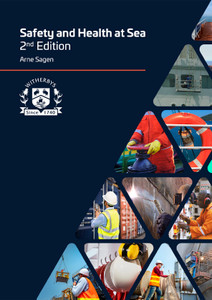
The Polar Code was developed to supplement existing IMO instruments in order to increase the safety of ships’ operation and mitigate the impact on the people and environment in the remote, vulnerable and potentially harsh polar waters. It came into effect in 2017 for new ships and in 2018 for existing ships.
The Code acknowledges that polar water operation may impose navigational demands beyond the existing requirements of SOLAS, MARPOL and any relevant binding IMO instruments. The key principles for developing the Polar Code have been to use a risk based approach in determining scope and to adopt a holistic approach in reducing risks. Detail is given on ship structure to ensure integrity is retained in ice conditions and during both global and structural loads. Although the Code is intended to apply to both Arctic and Antarctic waters, the legal and geographical differences between the two areas have been taken into account.
The
present
International
Code
for
Ships
Operating
in
Polar
Waters
(Polar
Code)
was
adopted
by
Maritime
Safety
Committee
(MSC),
at
its
ninety-fourth
session,
by
resolution
MSC.385(94),
and
by
the
Marine
Environment
Protection
Committee
(MEPC),
at
its
sixty-eighth
session,
by
resolution
MEPC.264(68).
It
results
from
strenuous
work
of
various
IMO
bodies
over
a
five
year
period.
The
Polar
Code,
which
enters
into
force
on
1
January
2017,
is
mandatory
under
both
the
International
Convention
for
the
Safety
of
Life
at
Sea
(SOLAS)
and
the
International
Convention
for
the
Prevention
of
Pollution
from
Ships
(MARPOL).
In
this
context,
the
safety
related
requirements
are
mandatory
under
the
new
Chapter
XIV
of
SOLAS,
adopted
by
resolution
MSC.386(94),
and
the
marine
environment
protection
related
requirements
are
mandatory
under
amendments
to
Annexes
I,
II,
IV
and
V
of
MARPOL,
adopted
by
resolution
MEPC.265(68).
The
Polar
Code
has
been
developed
to
supplement
existing
IMO
instruments
in
order
to
provide
a
more
comprehensive
set
of
provisions
to
address
the
increased
interests
and
traffic
in
the
polar
regions,
and
the
unique
operational,
environmental
and
search
and
rescue
concerns
peculiar
to
these
areas,
taking
into
account
that
the
consequences
of
any
major
safety
or
pollution
incident
in
polar
waters
are
likely
to
cause
widespread
harm
to
these
pristine
environments.
The
Polar
Code
covers
the
full
range
of
design,
construction,
equipment,
operational,
training,
search
and
rescue
and
environmental
protection
matters
relevant
to
ships
operating
in
waters
surrounding
the
two
poles.
It
includes
mandatory
measures
covering
safety
(Part
1A)
and
pollution
prevention
(Part
2A)
and
recommendatory
provisions
for
both
(Parts
1B
and
2B).
MSC.385(94) International Code for Ships Operating in Polar Waters (Polar Code)
MEPC.264(68) International Code for Ships Operating in Polar Waters (Polar Code)
Part
1A
Safety
measures
Chapter
1
General
Chapter 2 Polar Water Operational Manual (PWOM)
Chapter 3 Ship structure
Chapter 4 Subdivision and stability
Chapter 5 Watertight and weathertight integrity
Chapter 6 Machinery installations
Chapter 7 Fire safety/protection
Chapter 8 Lifesaving appliances and arrangements
Chapter 9 Safety of navigation
Chapter 10 Communication
Chapter 11 Voyage planning
Chapter 12 Manning and training
Part 1B Additional guidance regarding the provisions of the Introduction and Part 1A
Part 2A Pollution prevention measures
Chapter 1 Prevention of pollution by oil
Chapter 2 Control of pollution by noxious liquid substances in bulk
Chapter 3 Prevention of pollution by harmful substances carried by sea in packaged form
Chapter 4 Prevention of pollution by sewage from ships
Chapter 5 Prevention of pollution by garbage from ships
Part
2B
Additional
guidance
regarding
the
provisions
of
the
Introduction
and
Part
2A
A??s a specialized agency of the United Nations, IMO is the global standard-setting authority for the safety, security and environmental performance of international shipping. Its main role is to create a regulatory framework for the shipping industry that is fair and effective, universally adopted and universally implemented.
In other words, its role is to create a level playing-field so that ship operators cannot address their financial issues by simply cutting corners and compromising on safety, security and environmental performance. This approach also encourages innovation and efficiency.
Shipping is a truly international industry, and it can only operate effectively if the regulations and standards are themselves agreed, adopted and implemented on an international basis. And IMO is the forum at which this process takes place.
- Number of Pages:
- 84
- ISBN:
- 9789280116281
- Published Date:
- June 2016
- Book Height:
- 250 mm
- Book Width:
- 210 mm
- Author:
IMO
- Binding Format:
- Paperback
- Preview:
- Yes
- Publication Date:
- June 2016



